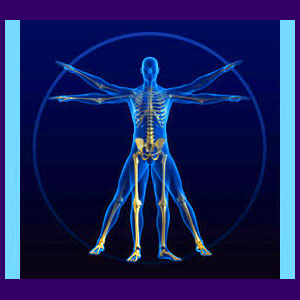
Antalgia is a term heard often in the back pain community, yet it is rarely understood by patients. Many believe it to be an actual painful spinal condition, but this is completely incorrect. The definition of this medical term simply means a method of removing pain or lessening pain. Therefore, the nomenclature can be applied to any pain relieving treatment, but is far more commonly associated with organic conditions demonstrated by the body in response to pain, such as postural compensation. The usual examples of this use include antalgic list and antalgic gait.
This discussion clarifies an important concept of organic adjustments caused by the expression of pain. We would not have to publish this essay if other idiotic websites did not consistently report antalgia to be a “painful back condition”, with the search engines showing their support for this utter stupidity.
Antalgic Gait
This particular anatomical term means that the patient has developed a different way of walking in response to pain. In the dorsopathy industry, a wide range of lower back pain and sciatica conditions can affect mobility or cause increased symptoms upon walking. This often expresses itself in an alteration of a normal gait pattern. It does not take a medical doctor to recognize this change, since the patient will obviously be walking strangely in most cases.
This condition should not be confused with changes in gait due to non-painful nerve compression, such as foot drop. In these cases, the change in gait is not due to pain, but instead, sourced in the simple fact that the mobilizing muscle is unable to move properly due to a lack of nerve energy innervating the structure.
Antalgic Lean
This particular diagnostic term, also called an antalgic list, is very common in lower back pain conditions, but is also occasionally seen in middle back pain, upper back pain or even neck pain conditions. A list simply means that the patient is leaning or bending to one side without consciously enacting the movement. These lists are caused due to painful stimuli in the affected area and muscular response, including extreme tightening and spasming in a protective capacity.
The patient may be bent forward or to either side, creating a disturbing appearance and often scaring them half to death. Ironically, most list conditions resolve without treatment once the back muscle spasm ends and typically, the patient will suffer no lasting physical effects.
The psychological effect of this type of back pain is a completely different story altogether and most patients live in continuing fear of a recurrence.
Antalgia or Antalgic?
The first form, antalgia, is a noun, describing the actual condition. The latter, antalgic, is a descriptive word, being used as a adjective or adverb. Otherwise, they are identical.
I suffered postural lists many times during the 18 years I endured regular patterned attacks of back pain. Sometimes, my entire pelvis was thrown violently to one side or the other. My chiropractors treated this aggressively with spinal adjustments, which were torturous to endure.
The spine can not be forced into place when the muscles are guarding. It seems they never understood this simple fact, as they did it over and over. God only knows what kind of damage was done to my muscles, ligaments, tendons and vertebrae by this constant abuse. Unfortunately, I have no one to blame but myself, since I allowed this torment to endure year over year until I finally woke up and got a clue about the real nature of my pain. Better late than never, I guess.




